
After 140 days of committee hearings, floor debates, public testimony, and political maneuvering inside the state Capitol, the 89th Texas Legislature wrapped up its regular session — leaving behind a wave of new Texas laws and even more unfinished business.
Lawmakers passed more than 1,300 bills—many addressing criminal, family, and personal injury law—while over 8,000 others failed to advance, reflecting a lower-than-usual passage rate of roughly 14 percent.
Among the most widely watched developments of the session was the fate of Senate Bill 3, a high-profile proposal to ban THC products that was vetoed by Governor Greg Abbott just before the midnight deadline on June 22 — a move that both stunned and divided state leadership while keeping Texas’ billion-dollar hemp industry alive for now. The governor’s veto foreshadows a looming special session, where the regulation of THC and other contentious issues will take center stage
In our 2025 legislative update, we take a look at 47 of the most interesting or impactful new Texas laws that made it past the finish line, as well as key proposals that failed to pass but remain on the radar for future sessions. Where there is political momentum and public interest, there is always the potential for revival.
New Texas Laws
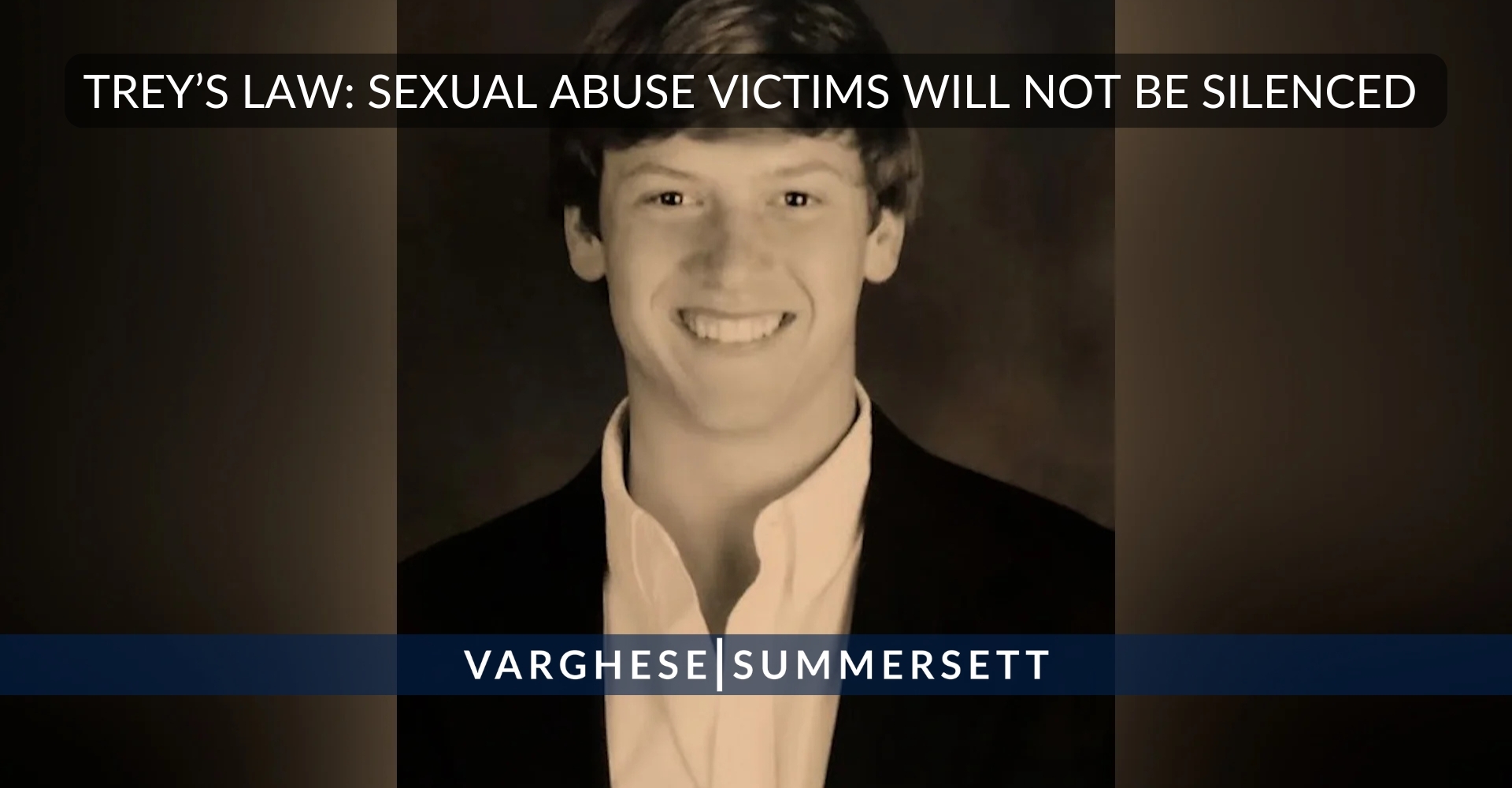
1. Trey’s Law: Sexual Abuse Victims Will Not Be Silenced
SB 835, Effective Sept. 1, 2025
Senate Bill 835 – commonly referred to as “Trey’s Law” – bans the use of non-disclosure agreements to silence victims of sexual abuse. The bill is named after Trey Carlock, a Dallas native who was abused as a child and later died by suicide after being required to sign an NDA as part of a settlement. The law applies to both child and adult victims and will also void existing NDAs that have previously prevented survivors from speaking out. Read more about Trey’s Law.
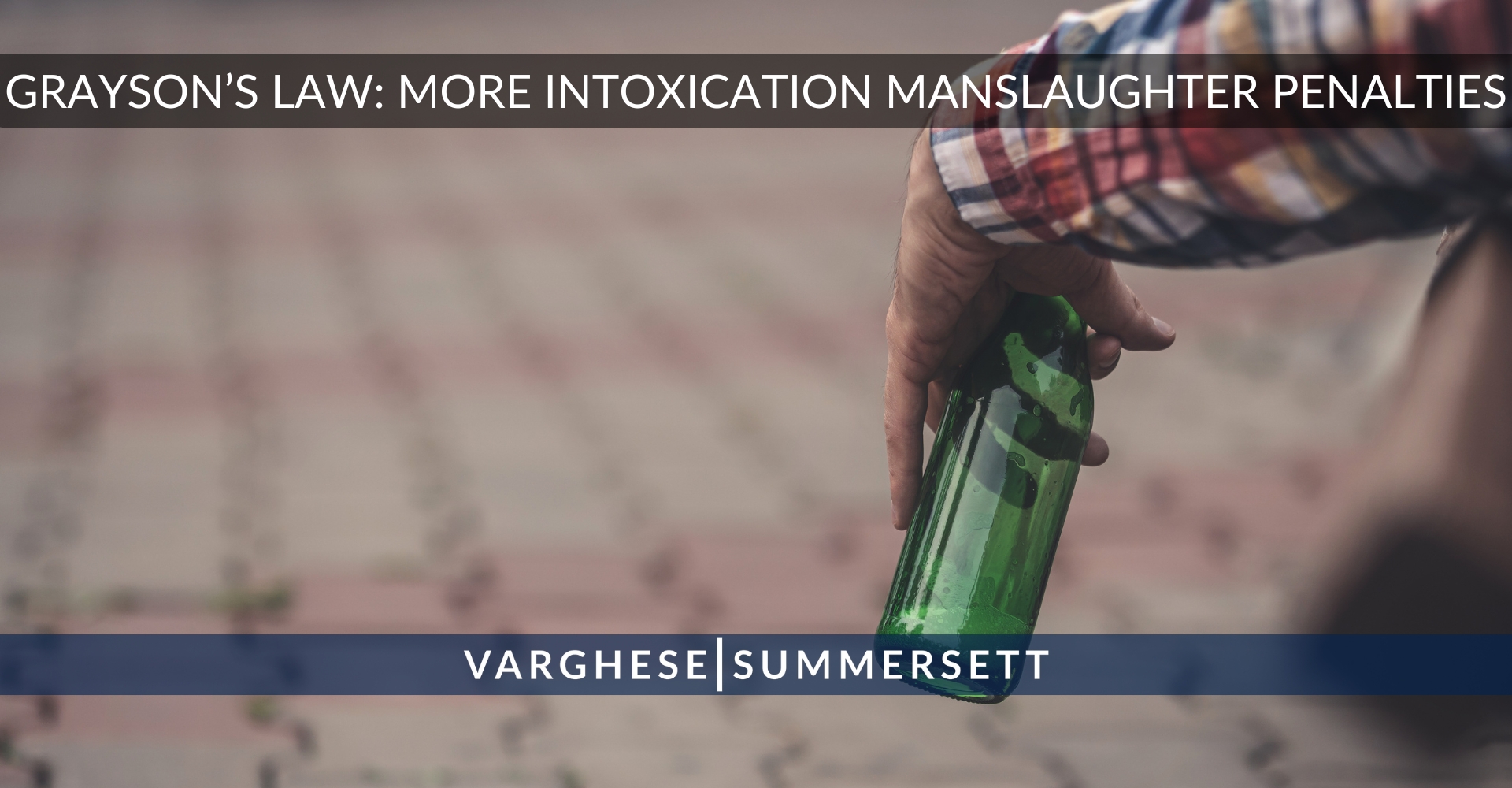
2. Grayson’s Law: Intoxication Manslaughter Penalties for Illegal Aliens
HB 2017, Effective Sept. 1, 2025
House Bill 2017, known as “Grayson’s Law,” increases the mandatory minimum sentence for intoxication manslaughter from 2 years to 10 years if the defendant was unlawfully present in the United States at the time of the offense. Named in honor of Grayson Davis, a young victim killed by a suspected drunk driver without legal status, the law also bars those convicted under this provision from receiving community supervision, deferred adjudication, parole, or mandatory supervision until they have served at least 10 calendar years — without credit for good conduct time

3. Ultimate Punishment for Attempting to Kill Police
HB 1871, Effective Sept. 1, 2025
This law makes attempting to kill a peace officer in the line of duty a capital felony. That means it carries the same punishment range as capital murder — life without parole or, in some cases, the death penalty.
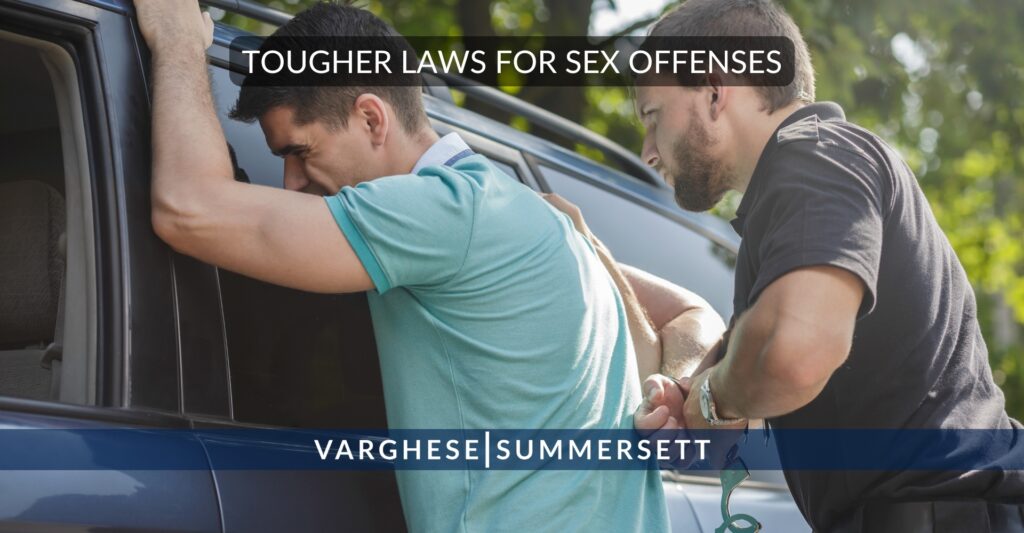
4. Tougher Laws for Sex Offenses
HB 1422, Effective Sept. 1, 2025
This legislation expands protections for victims of sex crimes and increases penalties for offenders — especially those targeting children. Key provisions include:
- Creates the new criminal offense of “continuous sexual abuse of adults” for individuals who commit multiple sex offenses against two or more victims within a 30-day period. This extends protections that previously only existed for child victims.
- Harsher Sentencing: Increases the severity of punishment for repeat and serial sex offenders by allowing courts to impose consecutive (stacked) sentences for multiple sexual assault convictions, regardless of the victim’s age. It also increases the category of punishment for certain offense if the offender has prior convictions and makes certain sex offenses punishable by life in prison if specific conditions are met.
- Restrictions on Probation and Parole: Offenders convicted of certain sex crimes are ineligible for probation, deferred adjudication or parole.

5. Crackdown on Child-Like Sex Dolls
HB 1443, Effective Sept. 1, 2025
House Bill 1443 creates new criminal offenses targeting the possession and promotion of child-like sex dolls — anatomically correct devices that resemble children and are intended for sexual use. Possessing or promoting such dolls is now a felony offense in Texas. Promotion is a second-degree felony punishable by 2 to 20 years in prison. Possession with intent to promote is a third-degree felony punishable by 2 to 10 years in prison. Simple possession is a state jail felony punishable by up to six months in a state jail facility.

6. E-Cigarette Crackdown
SB 2024, Effective Sept. 1, 2025
This legislation tightens regulations on e-cigarette products to curb youth vaping by expanding the definition to include all vape substances—nicotine or not—and banning marketing tactics that appeal to minors, such as cartoon imagery, candy flavors, and products disguised as toys or school supplies. The law also prohibits e-cigarettes made in China or hostile nations and bans harmful additives like cannabinoids and tianeptine. Violations will now be classified by a Class A misdemeanor, punishable by up to a year in county jail.
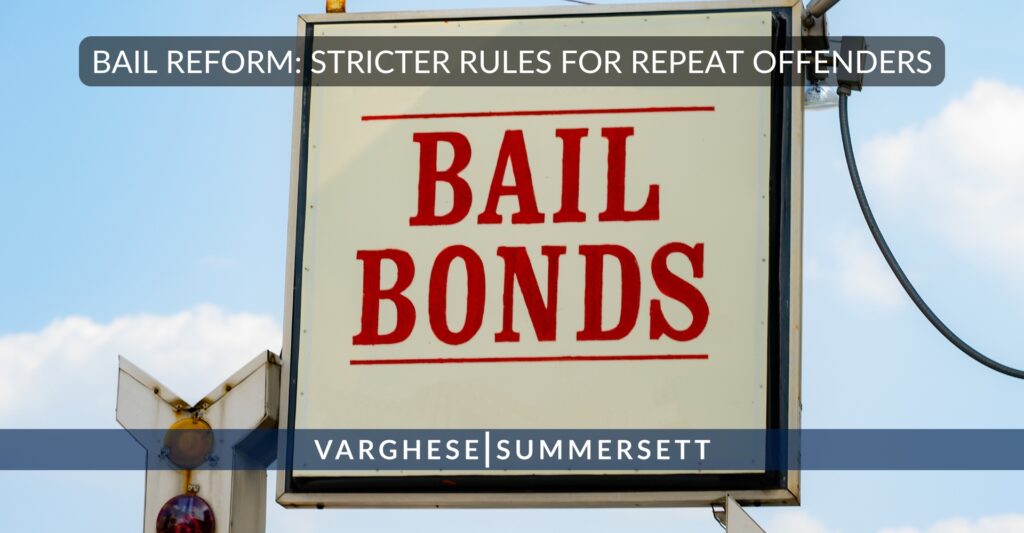
7. Bail Reform: Stricter Rules for Repeat and Violent Offenders
SB 9, Effective Sept. 1, 2025
Senate Bill 9 aims to enhance public safety and improve consistency in pretrial release decisions. Key provisions of the new law include:
- Magistrates must use the Public Safety Report System (PSRS) – a centralized tool that compiles criminal history and risk data – before granting bail in felony cases, ensuring that decisions are informed by consistent, evidence-based information.
- Restrictions on Personal Bonds: The new Texas law restricts the use of personal bonds for individuals charged with violent or repeat offenses, especially those currently on parole or community supervision for violent crimes.
- Limits on Judicial Authority: Magistrates who are not higher court judges are prohibited from reducing or modifying bond amounts set by district court judges, and prosecutors can appeal bail decisions they consider too low, even if a judge has deemed the defendant safe for release.
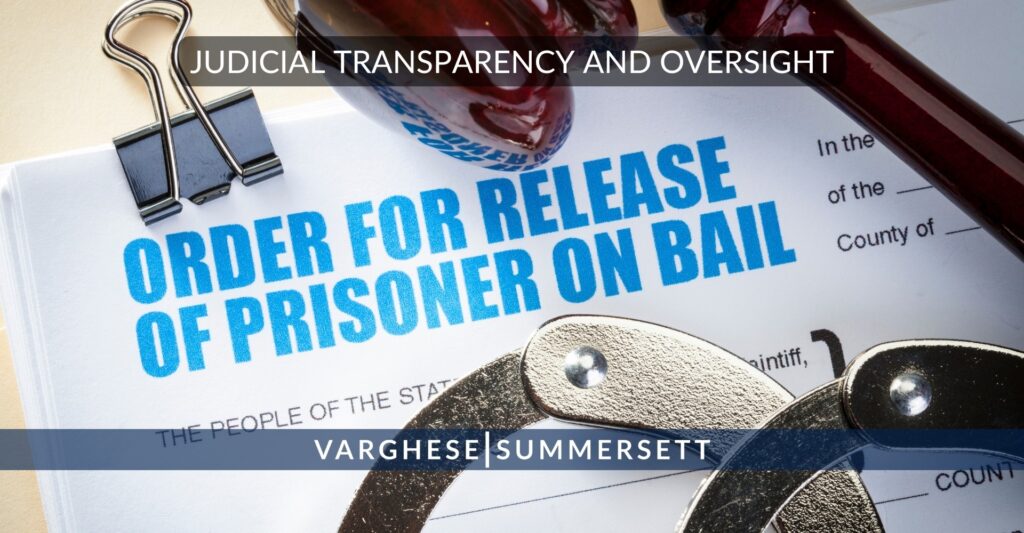
8. Bail Judicial Transparency and Oversight
HB 75, Effective Sept. 1, 2025
House Bill 75 tightens bail procedures by requiring magistrates to make written findings—especially if no probable cause is found—and expands use of the Public Safety Reporting System (PSRS) to give courts more criminal history information. The bill also shifts oversight of charitable bail organizations to the Office of Court Administration for statewide consistency and clarifies prosecutors’ ability to appeal bail decisions.
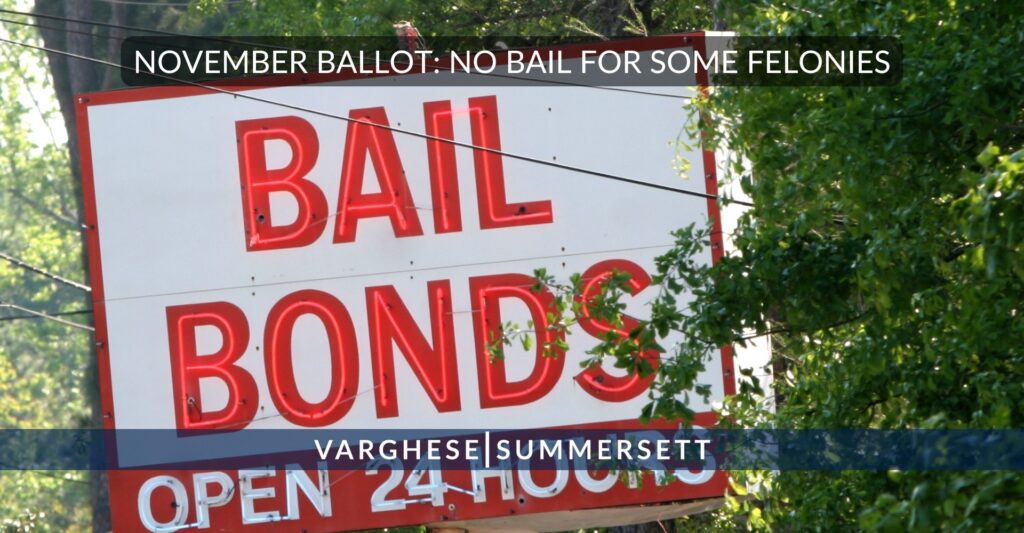
9. No Bail for Some Felonies
SJR 5, November Ballot
Senate Joint Resolution No. 5 (SJR 5) is a proposed constitutional amendment that would allow Texas courts to deny bail for certain serious felony offenses if the prosecution can show that bail would not reasonably ensure the defendant’s appearance in court or community safety. Offenses that could be considered for denied bail include violent crimes such as murder, aggravated assault with a deadly weapon, aggravated kidnapping, aggravated robbery, aggravated sexual assault, indecency with a child, and continuous trafficking of persons, among others.
The resolution was passed by both the Texas Senate and House and has been filed with the Secretary of State for placement on the November 4, 2025, ballot. The governor’s signature is not required for constitutional amendments – it goes directly to Texas voters to decide at the next general election.

10. No Public Funds for Nonprofit Bail Assistance
SB 40, Effective Sept. 1, 2025
Senate Bill 40 prohibits Texas counties, cities, and other local governments from using taxpayer money to fund nonprofit organizations that post bail for criminal defendants. The law is a response to concerns about public dollars underwriting bail efforts, particularly in places like Harris County. Under SB 40, any taxpayer or resident can sue for injunctive relief if a local government violates the law — and recover attorney’s fees if successful. While the bill imposes no new criminal penalties or costs at the state level, it may limit pretrial release options in communities that previously partnered with nonprofit bail funds.

11. Cosmetologists: Domestic Violence Awareness Training
HB 837, Effective Sept. 1, 2025
This legislation requires students and licensed professionals in the beauty industry to complete instruction on identifying and assisting victims of domestic abuse. The Texas Commission of Licensing and Regulation must ensure it’s part of both school curriculums and continuing education. By equipping beauty professionals—who often have close, regular contact with clients—lawmakers hope to increase early detection and support for victims.

12. Bank “Jugging” is Now a Felony
HB 1902, Effective Sept 1, 2025
Over the past several years, a crime trend called “bank jugging” or “jugging” has grown in popularity — when a suspect follows someone from a bank, ATM, or financial institution with the intent to steal, often targeting cash withdrawals. Lawmakers have now made that conduct a standalone offense. It is generally a state jail felony, punished by up to a year behind bars, but penalties can increase significantly — up to life in prison — if the jugging is committed in conjunction with burglary or robbery. This legislative change allows prosecutors to specifically charge jugging, rather than relying solely on broader robbery or burglary statutes.
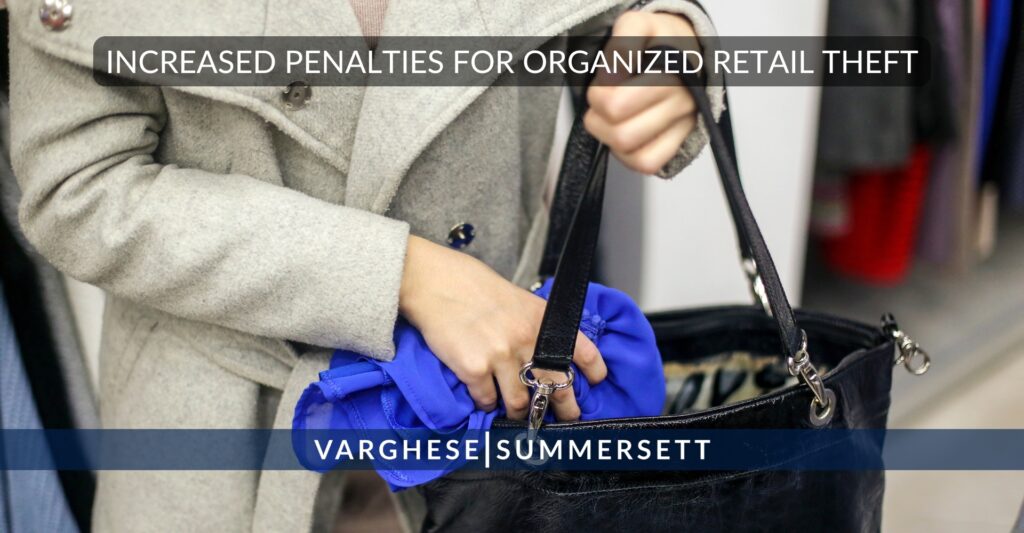
13. Increased Penalties for Organized Retail Theft
SB 1300, Effective Sept. 1, 2025
In an effort to deter organized retail theft, this legislation increases penalties for such offenses in Texas. The law raises the punishment for higher-value thefts: stealing goods worth $300,000 or more is now a first-degree felony, punishable by up to 99 years or life in prison and a fine up to $250,000. Previously, this would have been a second-degree felony.
The bill also simplifies prosecution. Prosecutors no longer need to itemize every stolen product in the indictment; they can charge offenders based on the total monetary value stolen from a merchant. Additionally, unaltered price tags are now accepted as evidence of value and ownership, and prior theft offenses can be used to show intent or participation in organized theft rings.

14. Special Appointments in Suits Affecting Child-Parent Relationship
HB 2530, Effective Sept.1, 2025
This law clarifies and updates the process for appointing amicus attorneys and other special roles involved in family court cases involving the parent-child relationship. It is intended to streamline family court procedures by establishing clear standards for when and how courts can appoint amicus attorneys, ensuring these appointments are necessary to protect the best interests of the child. The court must consider the parties’ ability to pay reasonable fees and balance the child’s interests against the cost of the parties.

15. New Rules for Non-Parent Custody
HB 2350, Effective Sept. 1, 2025
This legislation sets clearer standards for non-parents, such as aunts, uncles, grandparents or family friends who want to file for custody of a child. It requires these caregivers to have provided exclusive care for the child for at least six months before filing for custody. If both of the child’s parents are deceased, the law expands eligibility to include more distant relatives – up to fourth-degree relatives, such as great uncles, great aunts, or cousins once removed. By requiring non-parent caregivers to have provided exclusive care for at least six months before filing for custody, the law helps ensure that only those who have established a significant, stable relationship with the child can initiate custody proceedings.

16. Timely Billing for Injury-Related Healthcare
HB 4145, Effective Sept. 1, 2025
This law requires healthcare providers to send billing statements to a patient’s attorney, if represented, within 11 months of providing personal-injury-related services. It addresses a loophole that previously allowed providers to lose payment rights if bills were sent to attorneys instead of patients within the required timeframe. The law ensures providers are fairly compensated while aligning billing practices with common legal procedures in personal injury cases.

17. New Rules for Preserving DWI Toxicology Evidence
SB1660, Effective Sept. 1, 2025
Senate Bill 1660 establishes clear requirements for the retention and destruction of toxicological evidence in intoxication-related criminal cases, such as DWIs. Crime laboratories must annually notify the appropriate county prosecutor’s office of their possession of such evidence, providing both the date of receipt and the date the retention period will expire. Toxicological evidence must be preserved for the length of a defendant’s sentence or supervision, or—if there is no conviction—until acquittal or dismissal with prejudice. Once the retention period expires, evidence cannot be destroyed without first notifying the prosecutor, who then has 60 or 90 days (depending on the offense) to object in writing. The law strengthens communication protocols between labs and prosecutors to prevent premature disposal of evidence.

18. New Felony for Obscene Child Imagery
SB 20, Effective Sept. 1, 2025
This legislation makes it a criminal offense to possess, view, or promote visual material that obscenely depicts a child—whether the material involves a real child, an animation, a cartoon, or an AI-generated image. The new law is a state jail felony, punishable by up to two years in a state jail facility. If the defendant has previously been convicted once for similar offenses, the charge is elevated to a third-degree felony, punishable by up to 10 years in prison. If previously convicted two or more times for similar offenses, it becomes a second-degree felony, punishable by up to 20 years in prison.
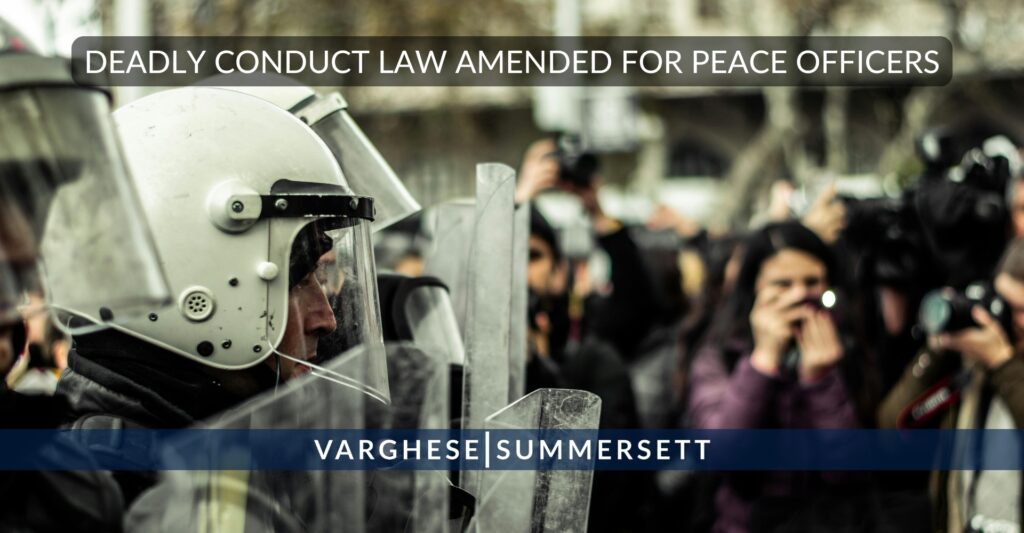
19. Deadly Conduct Law Amended for Peace Officers
SB1637, Effective Sept. 1, 2025
Under current law, a person commits the offense of deadly conduct if they knowingly point a firearm at or in the direction of another individual, regardless of whether they believe the firearm is loaded. This legislation amends the law to exclude peace officers from this provision when they are lawfully acting in their official capacity. As a result, peace officers will not be charged with deadly conduct for pointing a firearm at or in the direction of another person while performing their lawful duties.
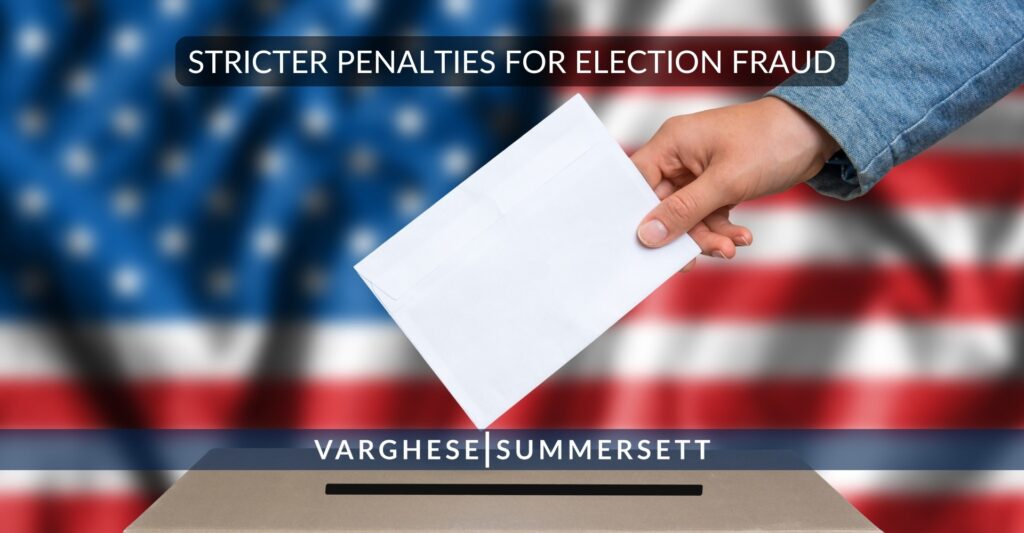
20. Stricter Penalties for Election Fraud
HB 5115, Effective Sept. 1, 2025
Under this new law, knowingly counting invalid votes, altering reports to include invalid votes, refusing to count valid votes, or altering reports to exclude valid votes are now explicitly classified as election fraud. The bill raises the general penalty for election fraud from a Class A misdemeanor to a second-degree felony, and if the offense is committed by an elected official acting in their official capacity, the penalty is elevated to a first-degree felony.

21. Protecting Officers from Frivolous Suits
SB 2750, Effective Immediately
This legislation amends the Texas Penal Code to provide clear legal protection for peace officers and correctional facility guards who use less-lethal force weapons—such as stun guns, chemical sprays, or impact devices—in the course of their official duties. The new law establishes that officers are justified in using such force if their actions are in substantial compliance with their training, helping to prevent unwarranted lawsuits and ensuring officers can safely de-escalate situations without fear of undue legal consequences.
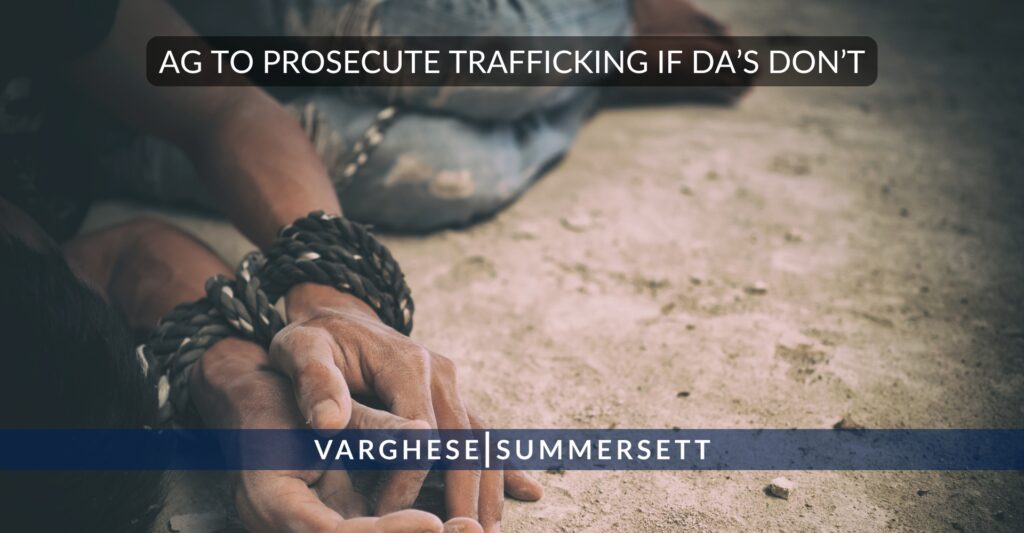
22. AG to Prosecute Trafficking if DA’s Don’t
HB 45, Effective Sept. 1, 2025
This law mandates that the Texas Attorney General must step in to prosecute human trafficking cases if a local district attorney fails to act within six months of receiving a law enforcement report. The law ensures that serious trafficking offenses are not neglected due to prosecutorial inaction and mandates law enforcement to notify both the local DA and the AG simultaneously. If the DA doesn’t move forward, the AG is required to takeover—unless a judge confirms prosecution is underway.
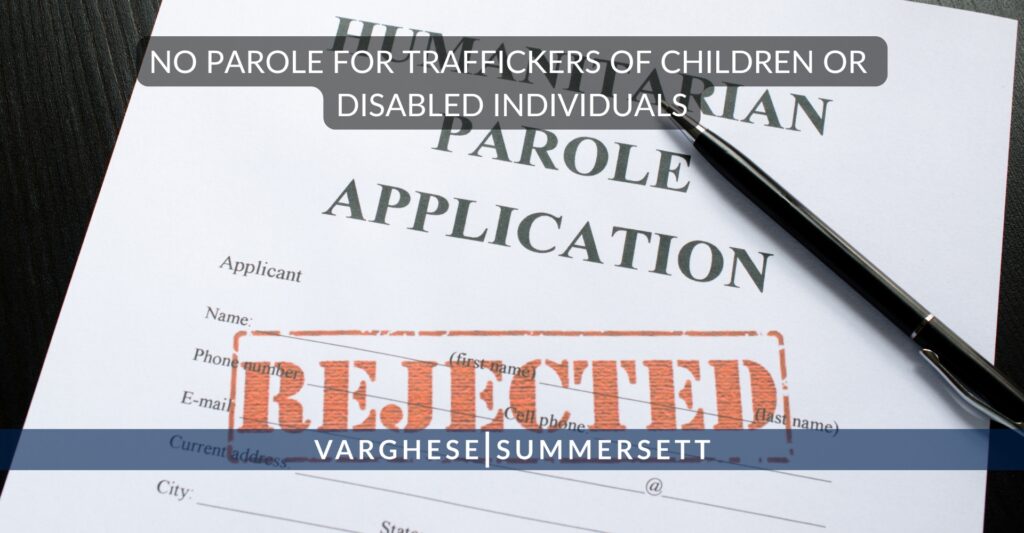
23. No Parole for Traffickers of Children or Disabled Individuals
HB 2306, Effective Sept. 1, 2025
Under this new law, those convicted and sentenced for specified trafficking crimes—including cases where the victim is a child or a person with disabilities—are ineligible for release on parole, joining the ranks of offenders already barred from parole for the most serious violent crimes.
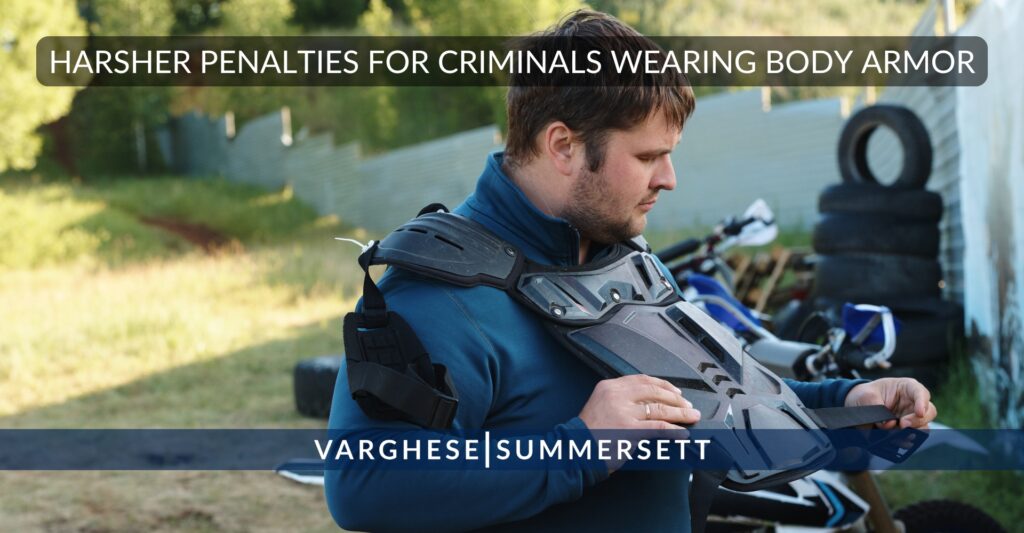
24. Harsher Penalties for Criminals Wearing Body Armor
HB 108, Effective Sept. 1, 2025
This legislation increases penalties for individuals who commit crimes while wearing metal or body armor. If used during a Class A misdemeanor or felony (excluding first-degree felonies), the offense is bumped up one category — raising, for example, a third-degree felony to a second-degree.

25. Expanded Support for Sexual Assault Survivors
HB 47, Effective Sept. 1, 2025
This new law strengthens victim protections by ensuring they receive information about their rights, access to victim compensation, and the opportunity to participate in the parole process. It covers reimbursement for post-exam medical care, expands certification for sexual assault nurse examiners, requires hospitals to train staff, and mandates rideshare companies conduct sex offender background checks.

26. Organized Oilfield Theft Prevention Unit
HB 48, Effective Immediately
This legislation establishes a dedicated oilfield theft prevention unit within the Texas Department of Public Safety, tasked with enforcing laws, conducting training, and developing strategies to crack down on the growing problem of oilfield theft in regions like the Permian Basin—a crime estimated to cost the state billions annually. The new unit will also run public awareness campaigns and report biannually to the legislature on its progress, aiming to dismantle organized criminal networks targeting energy infrastructure.

27. Fentanyl Child Endangerment Act
HB 166, Effective Sept. 1, 2025
This new law broadens the existing offense of endangering a child or elderly/ disabled person via methamphetamine exposure to include fentanyl and any controlled substances labeled Penalty Group 1-B. This law specifically excludes lawful medical use, such as fentanyl administered by an anesthesiologist.

28. Life of the Mother Act
SB 3, Effective Immediately
The Life of the Mother Act clarifies Texas’s abortion ban exceptions, making it clear that doctors can legally perform abortions in medical emergencies to save a woman’s life or prevent substantial impairment of a major bodily function. The law aligns language across Texas statutes, specifies that the threat to the mother does not need to be “imminent,” and provides legal protections for physicians acting within these guidelines. It also requires continuing education for doctors and attorneys on the law’s nuances.

29. Criminal Penalties for School Vendor Conflicts
HB 210, Effective Sept. 1, 2025
This new law makes it a criminal offense for vendors to do business with school districts or charter schools when board members or any close relations hold significant financial stakes or receive gifts that cost greater than $250. The purpose of this legislation is to strengthen ethical standards and ensure fair use of taxpayer resources.

30. Credit Card Fraud Cases Easier to Enforce
HB 272, Effective Sept. 1, 2025
This legislation expands venue rules for prosecuting the offense of fraudulent use and possession of credit/ debit card information. It does this by allowing cases to be filed in the county where the offense occurred or in the county where the victim resides. This also enhances prosecutorial flexibility and victim accessibility for these types of crimes by simplifying the proof of intent by treating them like other fraud offenses. This law does not create new crimes, but rather makes existing ones easier to enforce
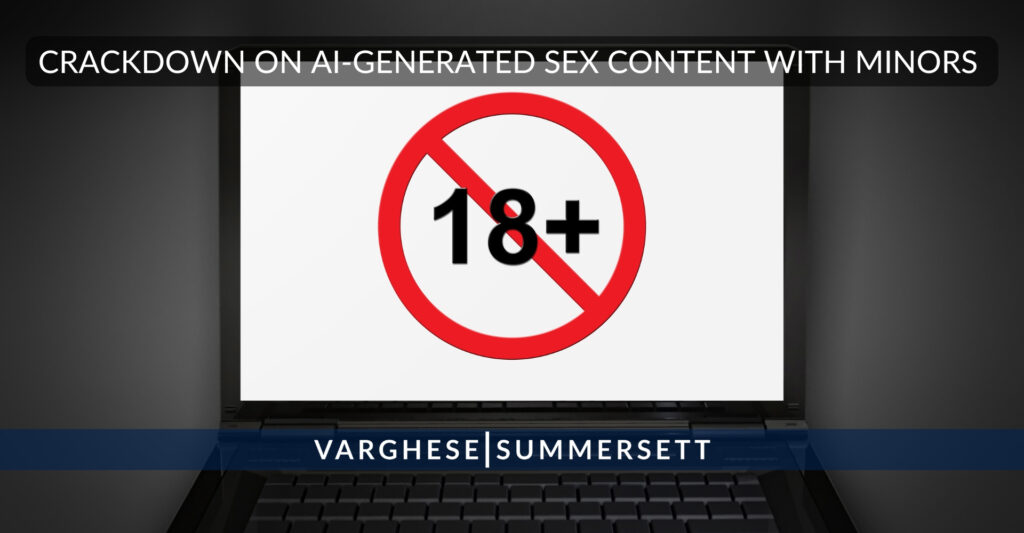
31. Crackdown on AI-Generated Sex Content with Minors
HB 581 Effective Sept. 1, 2025
This law cracks down and updates rules on AI-generated sexual content involving minors by imposing clear requirements on platforms. These include age verification for users, consent and adult status for image sources, privacy protections on user data, and increased civil fines for violations. It defines “artificial sexual material harmful to minors” as material in which a real person is distinguishable by appearance and applies to commercial entities that provide an online tool to create such material or make such material publicly available.

32. Asp-Morgan Act
HB 654, Effective Sept. 1, 2025
The Asp-Morgan Act adds to current laws under the Texas Parks and Wildlife Code by allowing certain hunters charged with illegal deer hunting – specifically those who inadvertently violate antler spread rules for deer – to have their case dismissed under specified conditions. The key requirements include a self-report, plea, course completion, no prior record, and proper carcass disposal.

33. Human Trafficking Prevention and First Responder Training
HB 742, Effective Sept. 1, 2025
This bill strengthens Texas’s efforts to combat human trafficking by requiring comprehensive training for first responders to recognize and respond to trafficking situations. This bill also mandates that certain health care facilities provide clear information about human trafficking to patients and visitors to increase public awareness. Additionally, it offers protections for facility employees who report suspected trafficking, shielding them from retaliation and encouraging proactive intervention.

34. Human Trafficking Prevention in Health Care Settings
HB 754, Effective Sept. 1, 2025
This bill strengthens Texas’s response to human trafficking by requiring medical assistants in certain health care facilities to complete specialized training on how to recognize and report trafficking. The bill also mandates that these facilities display clear, multilingual signs with information on identifying and reporting suspected trafficking, making resources visible to both staff and the public. Importantly, this bill protects employees from retaliation if they report suspected trafficking in good faith, encouraging a safer environment and supporting early detection and intervention in trafficking cases
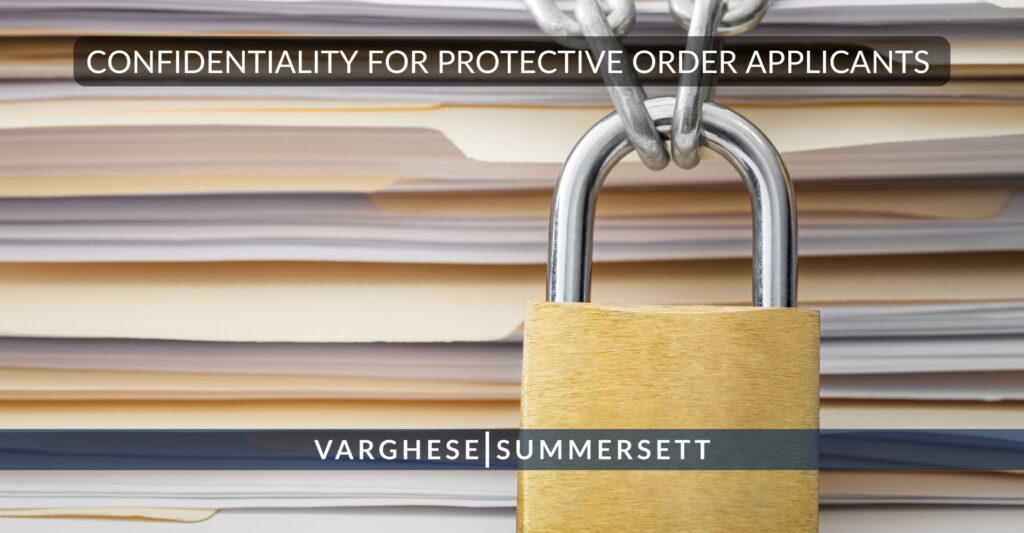
35. Confidentiality for Protective Order Applicants
HB 793, Effective Sept. 1, 2025
This new legislation in Texas strengthens the confidentiality of personal information for individuals who apply for or are protected by a protective order. This law mandates that courts honor requests to keep sensitive details such as home addresses and contact information confidential and shielded from public access. This enhanced privacy measure is designed to protect survivors from potential harm or retaliation, fostering a safer environment and encouraging more individuals to seek legal protection without fear of exposing their personal information.

36. Legal Protection for Cave Businesses
HB 1130, Effective Immediately
Texas’s new cavern liability law provides limited legal protection to businesses that operate commercial caverns for recreational or educational purposes. Under this legislation, operators are shielded from lawsuits for injuries, emotional distress, death, property damage, or other losses sustained during cavern activities, as long as a clearly worded warning sign prescribed by statute is posted at every cavern entrance. However, this protection does not apply if harm results from the operator’s negligence, such as failing to address known hazards or inadequately training employees, or from intentional misconduct. The law is designed to balance the promotion of cavern tourism with the need for participant safety and accountability

37. Texas Limits CPS Removals for “Neglect”
HB 1151, Effective Sept. 1, 2025
This law strengthens protections for parental rights when it comes to making medical decisions for their children. Under this legislation, parents cannot lose custody or have their parental rights terminated simply for making reasonable choices about their child’s medical care, such as declining psychotropic medications or choosing alternative treatments, unless those decisions create a substantial risk of harm to the child. The law also narrows the definition of neglect, limiting the circumstances under which Child Protective Services can intervene. At the same time, it preserves the state’s ability to step in when a child’s safety is genuinely at risk, striking a careful balance between protecting families and ensuring child welfare.
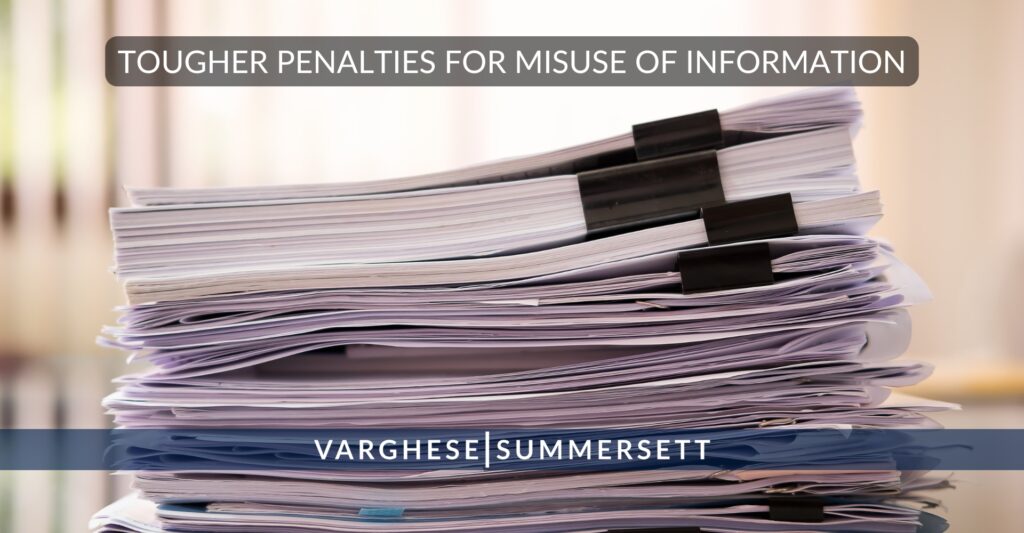
38. Tougher Penalties for Misuse of Official Information
HB 2001, Effective Sept. 1, 2025
This new law elevates penalties for the offense of misuse of information based on the net pecuniary gain to the offender. Abuse cases less than $150,000 remain a third-degree felony; abuses between $150,000-$300,000 are upgraded to a second-degree felony; and abuse of $300,000 or more becomes a first-degree felony. This law addresses disparity, targets corruption and insider abuse, and is expected to have no major budget impact on state or local governments
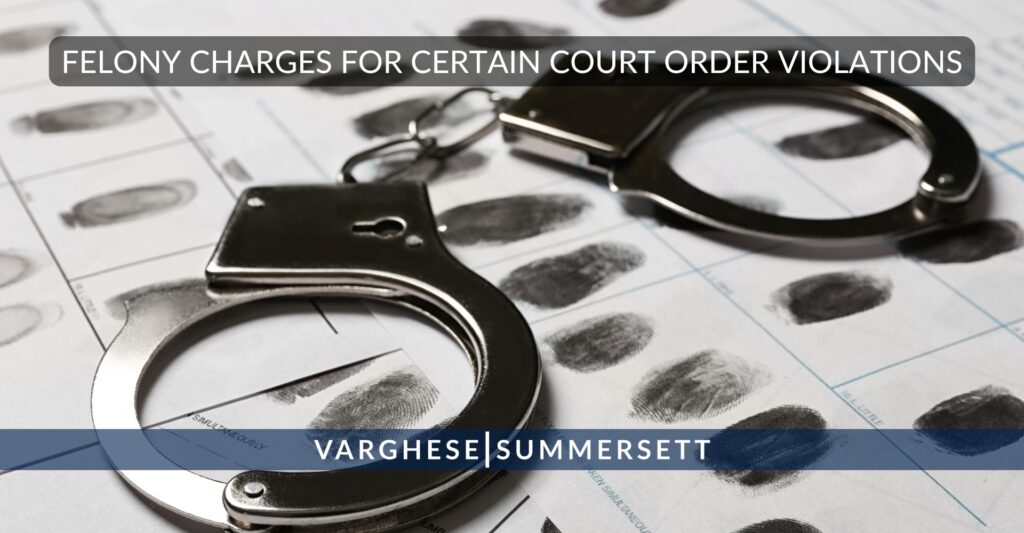
39. Felony Charges for Certain Court Order Violations
HB 2073, Effective Sept. 1, 2025
House Bill 2073 increases criminal penalties for violating court orders or bond conditions in cases involving family violence, child abuse, sexual assault, indecent assault, stalking, or trafficking. While most violations remain a Class A misdemeanor, repeat or aggravated violations, including those following a conviction or involving assault, are now prosecuted as felonies, with penalties ranging up to a third-degree felony, punishable by 2 to 10 years in prison. The law aims to better protect victims and deter repeat offenders by treating serious or repeated violations more harshly.
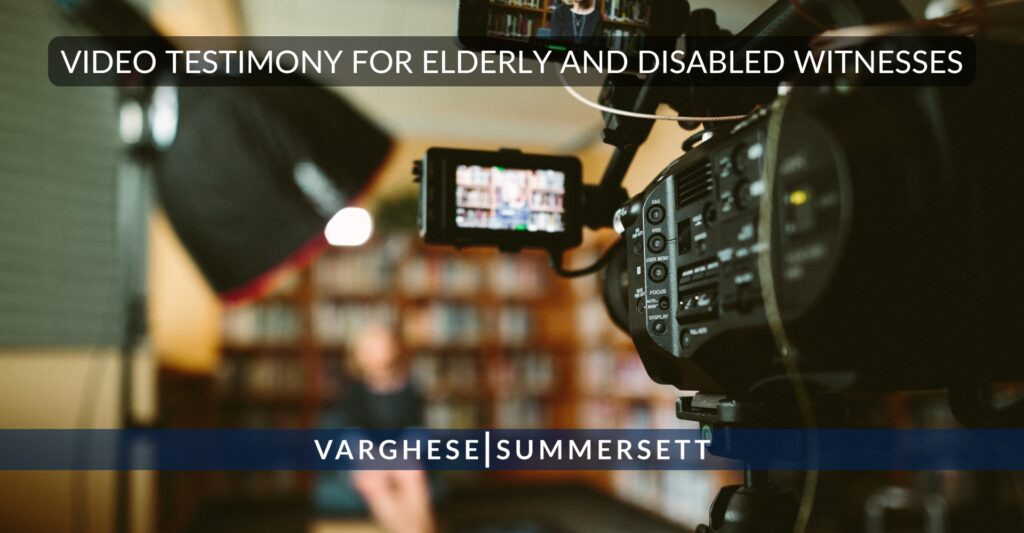
40. Video Testimony for Elderly and Disabled Witnesses
HB 2348, Effective Sept. 1, 2025
A new Texas law makes it easier for the testimony of elderly or disabled individuals to be preserved and presented in criminal cases. Courts can now order that depositions from these vulnerable witnesses be video recorded if either side requests it. This change helps ensure that important testimony is not lost simply because a witness is unable to appear in court physically. To maintain the integrity of the process, the video must be properly authenticated, and the person who operated the recording equipment must be available to confirm its accuracy. This update streamlines the use of video testimony, making it more accessible while still protecting the rights of all parties involved.
